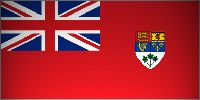Pieces of fragments of a big picture we'll never see...and pachyderms too!
Babble on.
You know the joke: five blind men bump into an elephant and try to figure out what it is. One touches the trunk and exclaims it's a snake. One puts his hand on the beast's side and says it's a wall. One wrappes his arms around a leg and calls it a tree. One gingerly touches the tip of a tusk and proclaims he's bumped into a spear. Attempting a humourous departure from the traditional version of the ancient Indian folk tale, the man at the back end of the elephant says he doesn't know what the heck it is, but it sure smells like crap.
Recent pieces on Nepal published by both The Tiger in Winter and The Globe and Mail make me wonder what the Nepalese political elephant really looks like. Probably a mix of the two different accounts, with other points of view we haven't even learned of yet; although I find myself more inclined to lean towards Ben's account than towards some Reuters employee shrilly quoting Amnesty International in an attempt to sell newsprint and ink.
Curtailing civil liberties is a serious matter, but, practically speaking, how free was Nepalese society if corruption and graft were as rampant as the King alleges? Especially with the ongoing civil war against the Maoists - a situation that was apparently not improving under the previous government?
My overarching concern with this reverse-coup and the abrogation of Nepal's constitution is the long-term message it sends to Nepali citizens. Democracies are self-governing by definition. Corruption and poor management by politicians are supposed to be punished by vigilant voters, not by a patriarchal head of state. King Gyanedra has effectively told his people that they cannot be trusted, and I'm concerned that they will believe him.
Only time will tell what Nepal's elephant truly looks like. [mischief] Who knows? Maybe it's one of these. Or worse, one of these. Guard your honey with your life! [/mischief]
Babble off.







0 Comments:
Post a Comment
<< Home